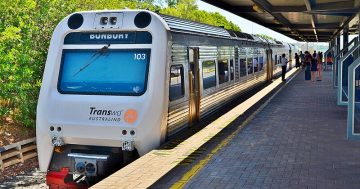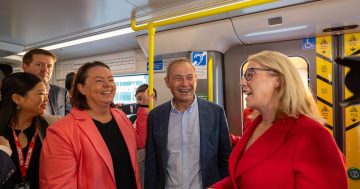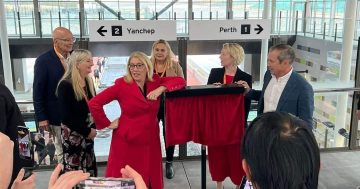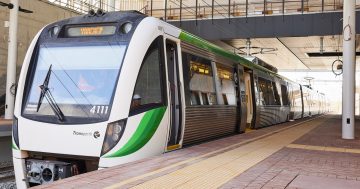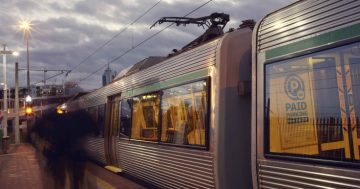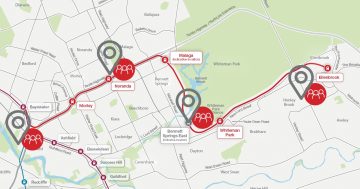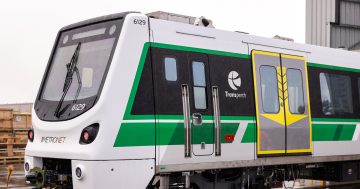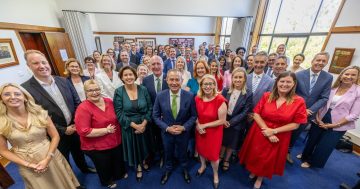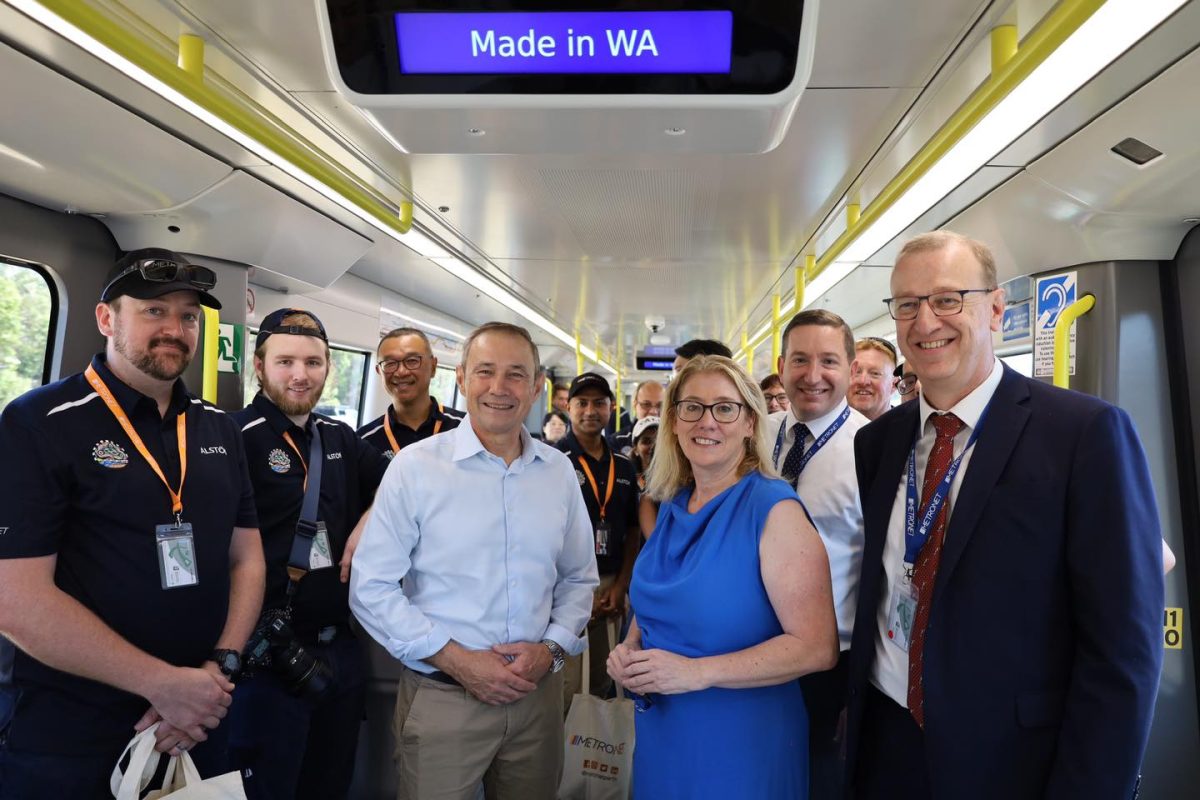
Premier Roger Cook said local rail manufacturing was back and here to stay in WA. Photo: Facebook/Rita Saffioti MLA.
The Wildflower State’s first locally built passenger train in three decades has taken its inaugural journey, with another 245 railcars on the way to the tracks.
Western Australia’s Premier Roger Cook and Transport Minister Rita Saffioti joined hundreds on the new METRONET C-series train, as it made a 50-minute return journey from Stadium Station over the weekend.
Fitted with nearly 400 seats and capable of carrying more than 1000 passengers, the new 143-metre train has formally begun operating on the Mandurah and Joondalup lines.
The six-car train is expected to have more than 103,000 daily passenger boardings over its decade-long railcar contract. In that time two new Australind trains will be constructed, while another 40 C-series will enter passenger services every few months.
WA’s Labor Government promised to bring railcar manufacturing home as part of its 2017 election commitments to meet the state’s growing demand for rail services.
The Transport Minister said it had been a massive journey to reach this point, but they had now achieved that goal.
“We’re continuing to exceed our local manufacturing target of 50 per cent – with 15 local businesses across Perth currently delivering key components for the trains,” said Ms Saffioti.
One new railcar manufacturing facility in Bellevue already employs around 150 workers, while the other 14 sites are constructing manufacturing parts, such as:
- Bogie frames (Hofmann Engineering – Bassendean)
- Battery boxes (Aerison – Forrestfield)
- Pantographs (mounts on the roof of the train that connect with the overhead line) (Austbreck – Kewdale)
- Passenger seats (McConnell – Bayswater)
- Piping (Parker Hannifin – Welshpool)
- Metallic components (Unique Metals – Wangara).
Last week the state announced it had selected AD Alliance as the preferred proponent to design, supply, build and maintain the Public Transport Authority’s High-Capacity Signalling (HCS) project.
The HCS project, funded by the State and Commonwealth governments, will replace the current signalling and train control systems on Perth’s passenger rail network, so it can run more trains, more often.
Contract negotiations have commenced for developing the new system. Upon completion it will send real-time train data to Transperth, allowing it to monitor the speed and location of every train on the growing rail network.
It will be delivered alongside the Radio Systems Replacement project, which is upgrading Transperth’s rail radio systems from the existing analogue technology with a high-tech digital communication platform.


